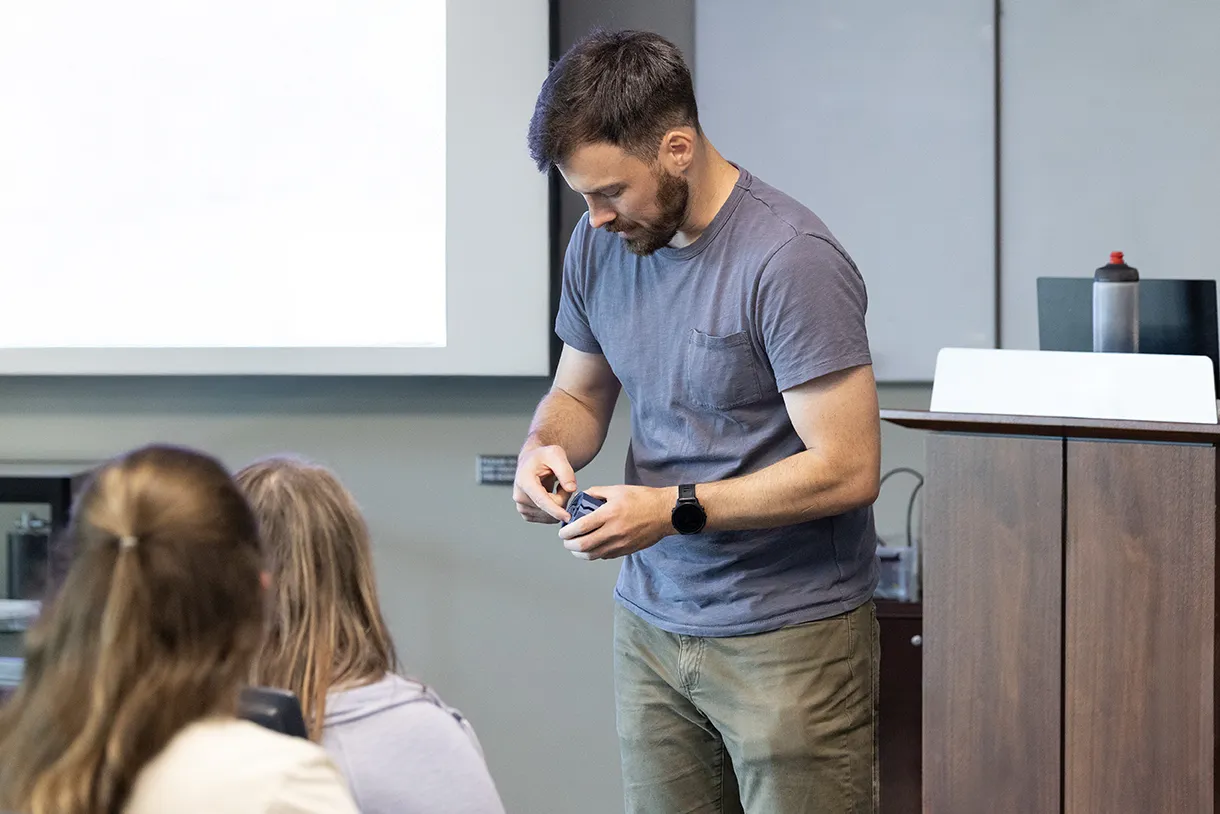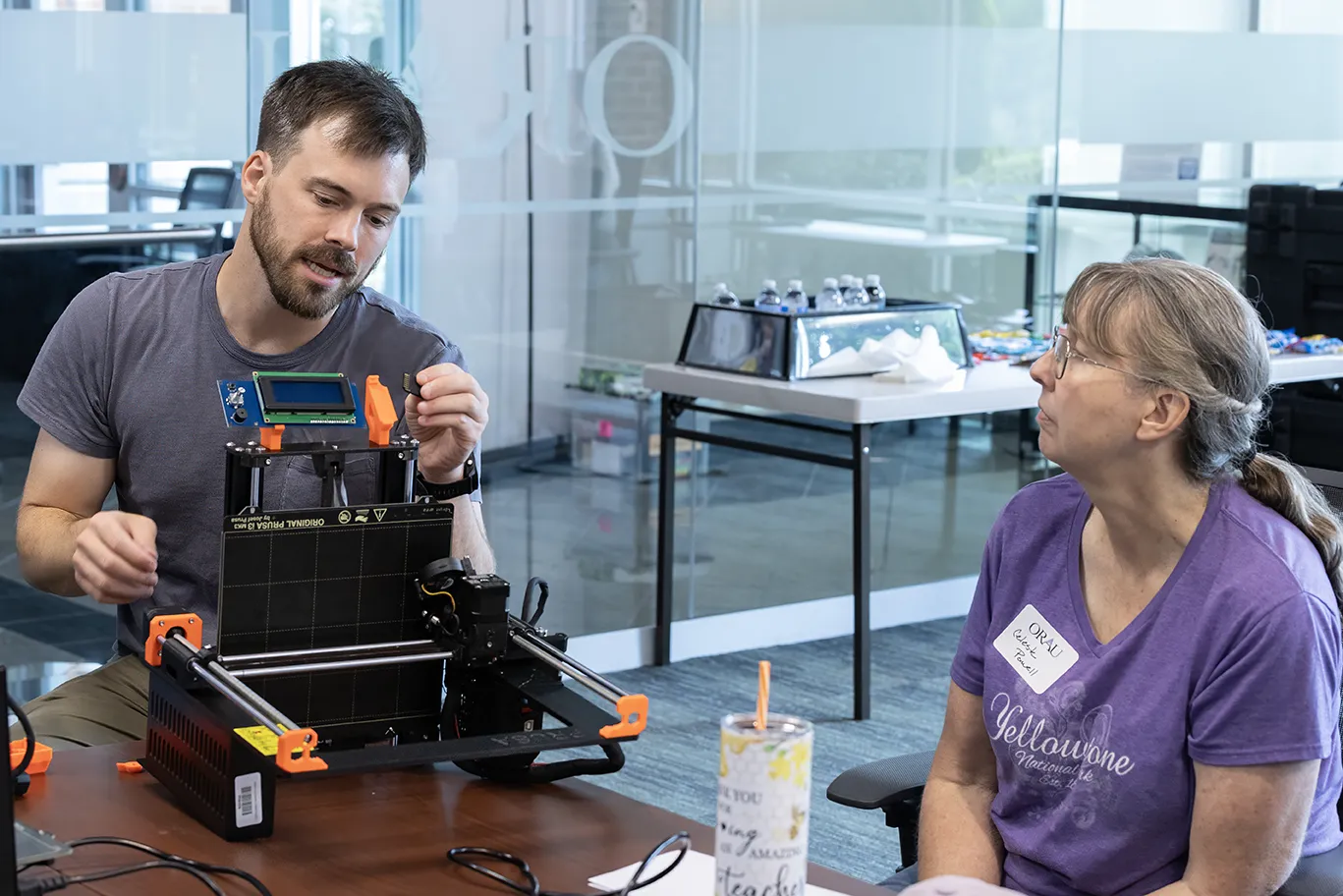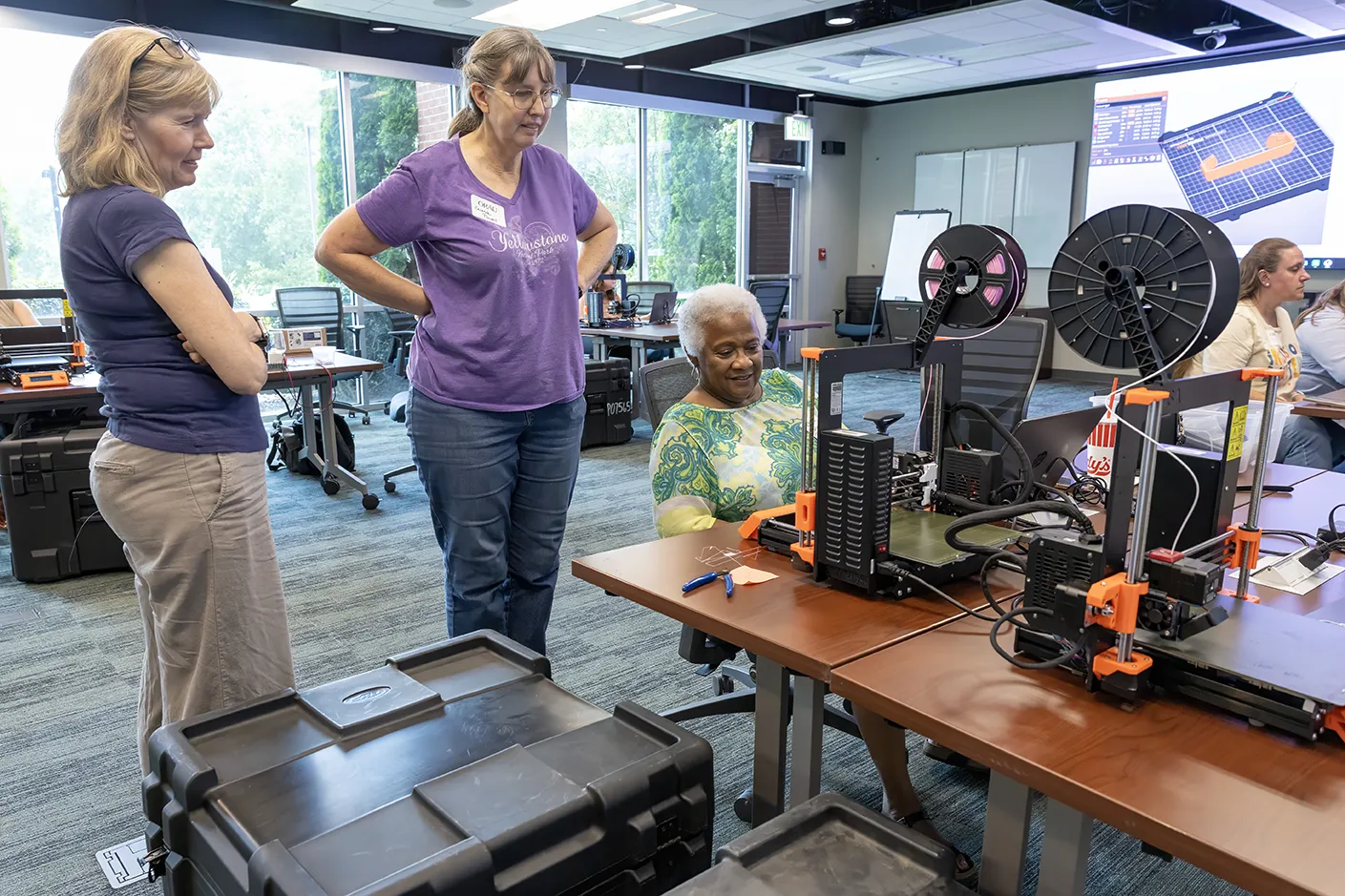For students, learning is most powerful when it’s tangible—something they can see, touch and build. That’s the philosophy behind Utilizing 3D Printers to Level Up Your Science Education, an ORAU professional development workshop designed specifically for educators looking to bring innovation and real-world application into their classrooms.
Led by Nathan Kenner, an engineering teacher at West High School in Knoxville, Tenn., the workshop goes beyond the buzz around 3D printing and focuses on practical, classroom-ready skills. “Teachers are door openers,” Kenner shared. “Learning this isn’t easy—but the message is the same one I give my students: try, fail, try again. That’s how you succeed.” 3D printing instructor Nathan Kenner shares an example of an item he printed for his engineering students.

Opening the door for all educators
Participants came to the workshop with varying levels of experience—from complete beginners to those who’ve dabbled with printers before. Cheryl, an art teacher from Central High School, joined with the goal of integrating 3D printing into sculpture lessons. Her presence underscored the expanding STEAM focus, highlighting how 3D tools serve not only STEM fields but also creative disciplines.
More than just trinkets
A key takeaway from the workshop was the idea that 3D printing isn’t just for making toys or keychains, it can revolutionize how students understand complex concepts through hands-on models like atomic structures for chemistry, cell models for biology, or planetary gear systems for engineering. Visual learners benefit immensely from being able to physically interact with what they’re studying.
Educators also explored the use of 3D printed tools in occupational therapy, such as writing supports, as well as math aids like fraction blocks. These models can enhance accessibility and offer personalized learning tools students can take pride in using—and creating.
A crash course in 3D printing
The class began with the basics: how to prepare a file, slice it, and get it to the printer. Kenner warned about common issues like the dreaded “spaghetti failure”—when a misprint turns into a tangle of melted plastic—and walked participants through troubleshooting steps.
Teachers were introduced to CAD (Computer-Aided Design), the foundation of any custom 3D print. Tools like TinkerCAD, Onshape, Fusion360, and Solidworks were covered, with guidance on which are best suited for different age groups. Teachers learned the difference between parametric and direct modeling, giving them a better understanding of how to design their own models or modify existing ones.
They also discovered helpful resources like Makerworld, Printables, and GrabCAD, where thousands of ready-to-print models are available for classroom use.
From idea to object: bringing it all together
Marlene Prater, a science teacher from Sweetwater Junior High, joined the workshop because she has two 3D printers in her classroom—but was not well versed in how to use them. With a coding class on her schedule next year, she wants to prepare her students to think like creators and problem-solvers. “I want them to make something useful, not just a toy,” she said. “I learn best by doing—and so do many of my students.”
That spirit of hands-on learning defined the final segment of the workshop. Teachers put their new knowledge to the test, downloading simple projects—like a small beta fish—and sending them to the printer. Others brainstormed classroom applications: buoyancy experiments using 3D printed boats, creating name badges, animal anatomy models, and even custom lab storage tools.
Unlocking the potential of 3D in the classroom
At the end of the workshop, participants walked away with actionable plans, access to resources, and the confidence to start 3D printing with their students. The technology might seem intimidating at first, but as Kenner reminds everyone: it’s okay to fail, as long as you’re willing to try again.
For these educators, 3D printing is no longer just a futuristic idea—it’s a practical, powerful tool ready to transform science education, one layer at a time.

ORAU 3D printing professional development course encourages teachers to transform learning one layer at a time.
